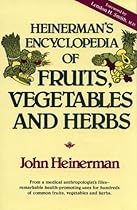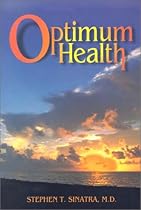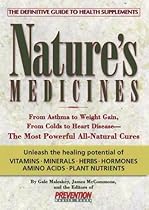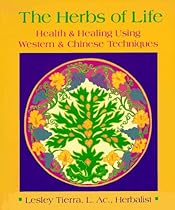| Used by herbalists to treat sore gums, mouth ulcers, and to remove warts. The Arabs believed that it prevents dying. No known toxicity. GRAS. SAIGON CINNAMON • See Cinnamon. SAIGON CINNAMON LEAF OIL • See Cinnamon. SAINT JOHN'S BREAD • See Locust Bean Gum. GRAS. SAINT JOHN'S WORT FLOWERS, LEAVES, and CAULIS • Hypericum perforatum. Amber. Blessed. Devil's Scourge. God's Wonder Herb. Grace of God. Goatweed. Hypericum. Klamath Weed. A perennial native to Britain, Europe, and Asia, it is now found throughout North America. |
| A salve made from the flowers is used by herbalists to treat scratches, swellings, and small wounds. The oil is used for burns. A spray has been used for colds. It reputedly also eases fibrositis, sciatica, and varicose veins. It is now being studied by researchers from the National Cancer Institute and universities as a potential treatment for cancer and AIDS. The FDA listed Saint John's wort as an "unsafe herb" in 1977. The FDA issued a notice in 1992 that Saint John's wort has not been shown to be safe and effective as claimed in OTC digestive-aid products. |
| The root contains various glycosides (see) including estrogenic substances and tannins. herbalists have used it to relieve nerve pains, menstrual pains, and the pain of childbirth; also used to speed delivery and reduce blood pressure. Black cohosh is believed to have sedative properties. In 1992, the FDA proposed a ban on black cohosh in oral menstrual drug products because it had not been shown to be safe and effective as claimed. BLACK CURRANT EXTRACT • The extract of the fruit of Ribes nigrum, a European plant that produces hanging yellow flowers and black aromatic fruit. |
| Modern herbalists use it in liniments and gargles.
CHILTE • A chewing-gum base component of vegetable origin. No known toxicity.
CHINA BARK EXTRACT • See Quillaja Extract. CHINESE CINNAMON • See Cinnamon. CHINESE CINNAMON LEAF OIL • See Cinnamon Leaf Oil. CHINESE RESTAURANT SYNDROME • Manifested by anxiety, flushed face, and pressure in the chest, has been shown to be caused by eating large amounts of the flavor enhancer MSG. Sulfite preservatives are now known to have the potential to cause a serious attack of asthma and even death. CHIQUIBUL • Manilkara zapotilla. |
| High in vitamin C, it has been used by herbalists to cure and prevent scurvy and to treat nausea. Used in cosmetics as an antioxidant. No known toxicity.
MOUNTAIN MAPLE EXTRACT • Extract from a tall shrub or bushy tree found in the eastern United States. Used in chocolate, malt, and maple flavoring for beverages, ice cream, ices, candy, and baked goods.
MOXIDECTIN • Cydectin. Antibacterial used for treatment and control of infections and infestations of certain internal and external parasites. The FDA allows a 0. |
Robyn Landis
See book keywords and concepts |
 These findings are consistent with the clinical experience of most herbalists, naturopaths, and other natural health practitioners—including Karta Purkh, his colleagues, and those interviewed in this documentary. Consistently, those consulted reported that 1 to 2 percent of all individuals experience mild reactions.8
In The Medicine Garden, Robert Temple, who evaluates drugs for the FDA, says that's hard to swallow. In typical clinical studies of drugs, he says, it's common to see 25 to 30 percent of subjects having adverse reactions. These findings are consistent with the clinical experience of most herbalists, naturopaths, and other natural health practitioners—including Karta Purkh, his colleagues, and those interviewed in this documentary. Consistently, those consulted reported that 1 to 2 percent of all individuals experience mild reactions.8
In The Medicine Garden, Robert Temple, who evaluates drugs for the FDA, says that's hard to swallow. In typical clinical studies of drugs, he says, it's common to see 25 to 30 percent of subjects having adverse reactions. |
| But traditional herbalists believe there may be dozens of other active, synergistic, or supportive components.
Astragalus heightens the efficiency of virtually every component of the immune system. Astragalus stimulates phagocytosis (invader-engulfing activity), increasing the total number of cells and the aggressiveness of their activity. Increased macrophage activity has been measured as lasting up to seventy-two hours. |
| Triphala
Triphala is the most revered general tonic in Ayurveda. herbalists in Asia may suggest it for literally, every single client. This combination formula is a superb, slow-acting tonic that can be taken from infancy through old age. It is one of the few remedies that can be used to treat all doshas, at all times, and contains all six tastes in balanced proportions.
Translated from Sanskrit as "three fruits," triphala contains the dried powders of amlaki (or amla), bibitaki, and haritaki. |
John Heinerman
See book keywords and concepts |
 NUTRITIONAL DATA
Without exception every standard medicinal herb book that I've looked through, written by famous or not-so-famous herbalists, invariably have made broad-sweeping generalities in regard to the presumed nutritional content of alfalfa. Yet not a single one of them has ever gone to the trouble of actually investigating the scientific literature in order to better understand the many different factors
1 governing this plant's nutritional contents. NUTRITIONAL DATA
Without exception every standard medicinal herb book that I've looked through, written by famous or not-so-famous herbalists, invariably have made broad-sweeping generalities in regard to the presumed nutritional content of alfalfa. Yet not a single one of them has ever gone to the trouble of actually investigating the scientific literature in order to better understand the many different factors
1 governing this plant's nutritional contents. |
John Heinerman
See book keywords and concepts |
 But not until it eventually lost favor with herbalists in the 17th and 18th centuries, did it become a prize attraction of horticulturists.
PETUNIA. Any of a genus of tropical American herbs with funnel-shaped or tubular-spreading petals or corollas. The common garden petunia, as well as many forms and varieties, have all been derived from P. axillaris (with white flowers) and P. violacea (with violet flowers). Both are native to Argentina. Petunias belong to the same nightshade family (Solanaceae) that potatoes, tomatoes, tobacco and chili peppers do.
ROSE. But not until it eventually lost favor with herbalists in the 17th and 18th centuries, did it become a prize attraction of horticulturists.
PETUNIA. Any of a genus of tropical American herbs with funnel-shaped or tubular-spreading petals or corollas. The common garden petunia, as well as many forms and varieties, have all been derived from P. axillaris (with white flowers) and P. violacea (with violet flowers). Both are native to Argentina. Petunias belong to the same nightshade family (Solanaceae) that potatoes, tomatoes, tobacco and chili peppers do.
ROSE. |
Stephen T., M.D. Sinatra
See book keywords and concepts |
 Dong quai is a favorite Asian herb long prescribed by traditional Chinese and Indian herbalists to balance the vital energy of the body. Dong quai is frequently used in the West to moderate PMS symptoms and menopausal hormone imbalances. Dong quai is a vasodilator; it also reduces cramps and muscle spasms. This herb also is high in phytoes-trogenic properties, and additionally alleviates vaginal dryness. As a uterine relaxer, it should be avoided during pregnancy and may cause sun sensitivity. This herb is commonly available in many health food shops and in pharmacies in urban areas. Dong quai is a favorite Asian herb long prescribed by traditional Chinese and Indian herbalists to balance the vital energy of the body. Dong quai is frequently used in the West to moderate PMS symptoms and menopausal hormone imbalances. Dong quai is a vasodilator; it also reduces cramps and muscle spasms. This herb also is high in phytoes-trogenic properties, and additionally alleviates vaginal dryness. As a uterine relaxer, it should be avoided during pregnancy and may cause sun sensitivity. This herb is commonly available in many health food shops and in pharmacies in urban areas. |
Lendon H. Smith, M.D.
See book keywords and concepts |
| Hypoglycemia, however, is a valid explanation for those with depression, especially if there is no good reason for the sadness, we know now that the type and amounts of food, sugar, aspartame, vitamins, minerals, toxic products, and amino acids are responsible for thoughts, feelings, and behavior. herbalists have used valerian, passiflora, and hops with some success.
A Child with Hyperactivity
I used to think that I had most of the answers to the all too common hyperactive child, now called Attention Deficit Disability (ADA). |
Dr. Richard Schulze and Sam Biser
See book keywords and concepts |
| John Christopher, and other herbalists, were big fans of Comfrey leaf and root for the same purpose, and had thousands of great patient healing stories and testimonials. It contains some of the same healing chemicals as Aloe. Since I used Aloe exclusively in my clinic and because it is already in gel form, I believe Aloe is superior.
Notes from Sam Biser: Dr. Schulze's late teacher, Dr. John Christopher, recommended all people keep a burn paste in their homes made up of 1/3 comfrey root powder, 1/3 raw honey, and 1/3 wheat germ oil. |
| So do most herbalists.
I watched herbs destroy those diseases and rebuild the patients' health. But it is important that I caution people about relying on herbs, then avoiding my natural healing programs that make the herbs work so much better.
Herbs can sometimes do it on their own, but you can also win the lottery too. It is unlikely that you will win the lottery. It is more likely that you will have to do some hard work in this lifetime to earn money to support you and your family.
But some people do win the lottery. |
| Most herbalists suggest a starting dose of 5-15 drops twice a day of a weak healthfood store tincture. This is 30 drops a day of weak stuff that cannot heal seriously-ill people.
What I am talking about is 180 drops a day of tinctures that are, on average, 10 times stronger than regular tinctures — because you will he packing the jarwith herbs, instead of using some low, pathetic standard that everyone else follows to save money.
Their weak stuff is not only ten times weaker, but they are using l/6th the dosage. So that is 60 times weaker than my starting dosages. |
| It is also misunderstood by herbalists, who have never used it, or never used it on serious cases, and do not understand what it can do. Lobelia contains over a dozen alkaloids, one of the strongest phytochemicals found in plants.
Dr. Schulze is the only herbalist who uses large doses of lobelia, and he is also the only one who gets the results he does from it. But the lobelia tincture must be strong.
Commercial lobelia tinctures are so weak and useless you could drink the whole bottle and feel nothing.
Best Species: There are many types and species of garden lobelia. |
Donald M. Epstein
See book keywords and concepts |
 If the above findings applied to practitioners of any other healing art, including chiropractors, acupuncturists, or herbalists, their professions would have been eliminated, their proponents ridiculed or thrown in jail, and their schools closed by order of the courts. Instead, the medical establishment today enjoys incredible prestige. Philanthropists donate billions of dollars for medical research, construction of hospitals, and other curing establishments. If the above findings applied to practitioners of any other healing art, including chiropractors, acupuncturists, or herbalists, their professions would have been eliminated, their proponents ridiculed or thrown in jail, and their schools closed by order of the courts. Instead, the medical establishment today enjoys incredible prestige. Philanthropists donate billions of dollars for medical research, construction of hospitals, and other curing establishments. |
Francisco, M.D. Contreras
See book keywords and concepts |
| In this survey, interviewees were asked first if they had requested help from "alternative doctors" (chiropractors, acupuncturists, herbalists, homeopaths, healers, etc.). Forty-seven percent confessed to having done so. They were also asked if they had considered seeking help from "alternative doctors" in cases where conventional medicine might not have been able to help them. Sixty-two percent answered "YES." The most shocking response was when they were asked: would you go back to the "alternative doctors," Eighty-four percent said "YES! |
Elaine Feuer
See book keywords and concepts |
 In the early 1990s, the FDA raided the following establishments: seventeen health food stores in Texas; a Utah-based herb company distributing evening primrose oil; a dietary supplement company in Oregon; a black-currant oil distributor in Illinois; the Life Extension Foundation in Florida; an alternative medical clinic in Kent, Washington; Nutricology in San Leandro; herbalists in northern and southern California; and many other small businesses throughout the country. In the early 1990s, the FDA raided the following establishments: seventeen health food stores in Texas; a Utah-based herb company distributing evening primrose oil; a dietary supplement company in Oregon; a black-currant oil distributor in Illinois; the Life Extension Foundation in Florida; an alternative medical clinic in Kent, Washington; Nutricology in San Leandro; herbalists in northern and southern California; and many other small businesses throughout the country. |
Gale Maleskey
See book keywords and concepts |
 In fact, the very terms drug and medicine are inappropriate descriptions of what they actually do. Many herbalists use other terms, such as tonic and adaptogen. Tonic herbs restore, nourish, and suppfort individual organs or the entire body. Adaptogens help restore balance in the body, particularly helping it to adapt to stress, be it physical, environmental, or emotional.
An adaptogen can make adjustments on the plus or the minus side. Let's say you're feeling run-down and sluggish—or just the opposite: stressed-out and wired. In fact, the very terms drug and medicine are inappropriate descriptions of what they actually do. Many herbalists use other terms, such as tonic and adaptogen. Tonic herbs restore, nourish, and suppfort individual organs or the entire body. Adaptogens help restore balance in the body, particularly helping it to adapt to stress, be it physical, environmental, or emotional.
An adaptogen can make adjustments on the plus or the minus side. Let's say you're feeling run-down and sluggish—or just the opposite: stressed-out and wired. |
| It's the first hurdle that the product must pass before it can be approved by the two certified herbalists. They use sight, smell, taste, and feel to evaluate whether the raw materials pass muster. If a shipment of ginger arrives, Winston will taste it to make sure the plant meets his criteria for gingerols, the active ingredients that give ginger its pungent taste.
As for the rest of the process, the strict hygiene and quality-control practices are self-imposed rather than required by law, according to Lambert. She thinks that these careful processes will someday be required of everyone. |
| Begun in 1982, the company sells most products wholesale to medical doctors, naturopathic doctors, homeopaths, herbalists, chiropractors, and health food stores.
Timing is also a factor. There are really very few herbs that you should be taking long-term unless it's to address a chronic condition, says Alison Lee, M.D., a pain-management specialist and medical director of Barefoot Doctors, an alternative medicine practice in Ann Arbor, Michigan. People should take breaks from herbal therapies. |
| That's why herbalists say that herbs are meant to be taken as a whole, including all of their chemical constituents, known and unknown, and they don't recommend extracting the active ingredients so that they become plant-derived chemicals that act independently. You might say that an herbal treatment is like the sound produced by an orchestra. Each instrument plays a separate part, but you don't get the orchestral sound until they're all playing together. |
Lesley Tierra
See book keywords and concepts |
 This information is gleaned from the author's and other herbalists' experiences and training along with the common uses herbal literature describes. Refer to the Bibliography for herbal book references.
Various ways the herb is applied are also given, all of which are described in the chapters on Herbal Preparations, Home Remedies or Home Therapies. Be sure to look up the applications in one of these chapters as more information on them is given there. This information is gleaned from the author's and other herbalists' experiences and training along with the common uses herbal literature describes. Refer to the Bibliography for herbal book references.
Various ways the herb is applied are also given, all of which are described in the chapters on Herbal Preparations, Home Remedies or Home Therapies. Be sure to look up the applications in one of these chapters as more information on them is given there. |
Gale Maleskey
See book keywords and concepts |
 Western herbalists classify astragalus as an adaptogenic herb, meaning that it helps the body return to a condition of normal functioning. In China, this popular herb is believed to strengthen chi, the body's defensive energy that protects against invading pathogens such as bacteria and viruses.
The root is the medicinal part of the plant, a perennial that can grow to about two feet tall. There are 2,000 species of astragalus worldwide?00 of them in North America—but the medicinal variety is found only in central and western Asia. Western herbalists classify astragalus as an adaptogenic herb, meaning that it helps the body return to a condition of normal functioning. In China, this popular herb is believed to strengthen chi, the body's defensive energy that protects against invading pathogens such as bacteria and viruses.
The root is the medicinal part of the plant, a perennial that can grow to about two feet tall. There are 2,000 species of astragalus worldwide?00 of them in North America—but the medicinal variety is found only in central and western Asia. |
Lesley Tierra
See book keywords and concepts |
 John's tide, the summer solstice, and some herbalists particularly like to pick it on St. John's day. This pretty yellow flowering plant has several beneficial uses. Internally it is a pain-relieving sedative used in treating anxiety, nervous tension and neuralgia. It is also antidepressant and can be used in the treatment of chronic depressive illness, anxiety and restiessness, lightening the mood and inducing a certain euphoria. Although it must be taken for several months before its full effects can be realized, its benefits can be felt within a few weeks. John's tide, the summer solstice, and some herbalists particularly like to pick it on St. John's day. This pretty yellow flowering plant has several beneficial uses. Internally it is a pain-relieving sedative used in treating anxiety, nervous tension and neuralgia. It is also antidepressant and can be used in the treatment of chronic depressive illness, anxiety and restiessness, lightening the mood and inducing a certain euphoria. Although it must be taken for several months before its full effects can be realized, its benefits can be felt within a few weeks. |
Rudolph M. Ballentine, M.D.
See book keywords and concepts |
 Even Western herbalists have sometimes fallen into this reductionistic trap. Identifying and using only the "active compound" from an herbal remedy is tantamount to taking the cleverest part of a computer program, transferring it to a disk, and throwing the rest away. Unfortunately, this has been the trend for nearly a hundred years, which may be one reason the Eclectic movement ultimately failed: as herbal medicine moved from forest and farm into the academic world, it lost its soul. Even Western herbalists have sometimes fallen into this reductionistic trap. Identifying and using only the "active compound" from an herbal remedy is tantamount to taking the cleverest part of a computer program, transferring it to a disk, and throwing the rest away. Unfortunately, this has been the trend for nearly a hundred years, which may be one reason the Eclectic movement ultimately failed: as herbal medicine moved from forest and farm into the academic world, it lost its soul. |
| Though numerous studies have shown that it can shrink the common enlargement of the prostate that sends so many middle-aged men to the bathroom all night,17 it often fails. Some herbalists insist this is because the berries used weren't fresh, while others emphasize that the dose must be sufficient (see Fig. 6).18
Some of the correspondences between certain herbs and the organs they help were discovered by more than one tradition. Different herbal traditions do share the use of certain herbs (see Fig. 5). |
| This is what makes Chinese and European herbalists look so different. While the European herbalist may describe herbs in terms of more Western notions about physiology, his Chinese counterpart will instead mention remedies for "damp heat" or "to strengthen yin." The Ayurvedic physician uses another entirely different set of concepts. She will talk about emptying the "mucusy accumulations" related to kapha, or soothing the firelike pitta.
Much of how the Native Americans prescribed their wealth of medicinals has been lost to us. |
| He expressed his disdain for the "regular" doctors on the one hand, with their bloodletting and violent purges, and the herbalists on the other, with their Doctrine of Signatures, which he felt was much abused. (One's fanciful imagination, he maintained—and there was a good measure of truth in what he said—could lead one to see the "signature" of whatever might be convenient!) He wanted instead an approach to treatment that was clear, concise, and free of the problems that plagued most of medicine.
OF PROVINGS AND PROOF
One of those problems is the thorny issue of diagnosis. |












